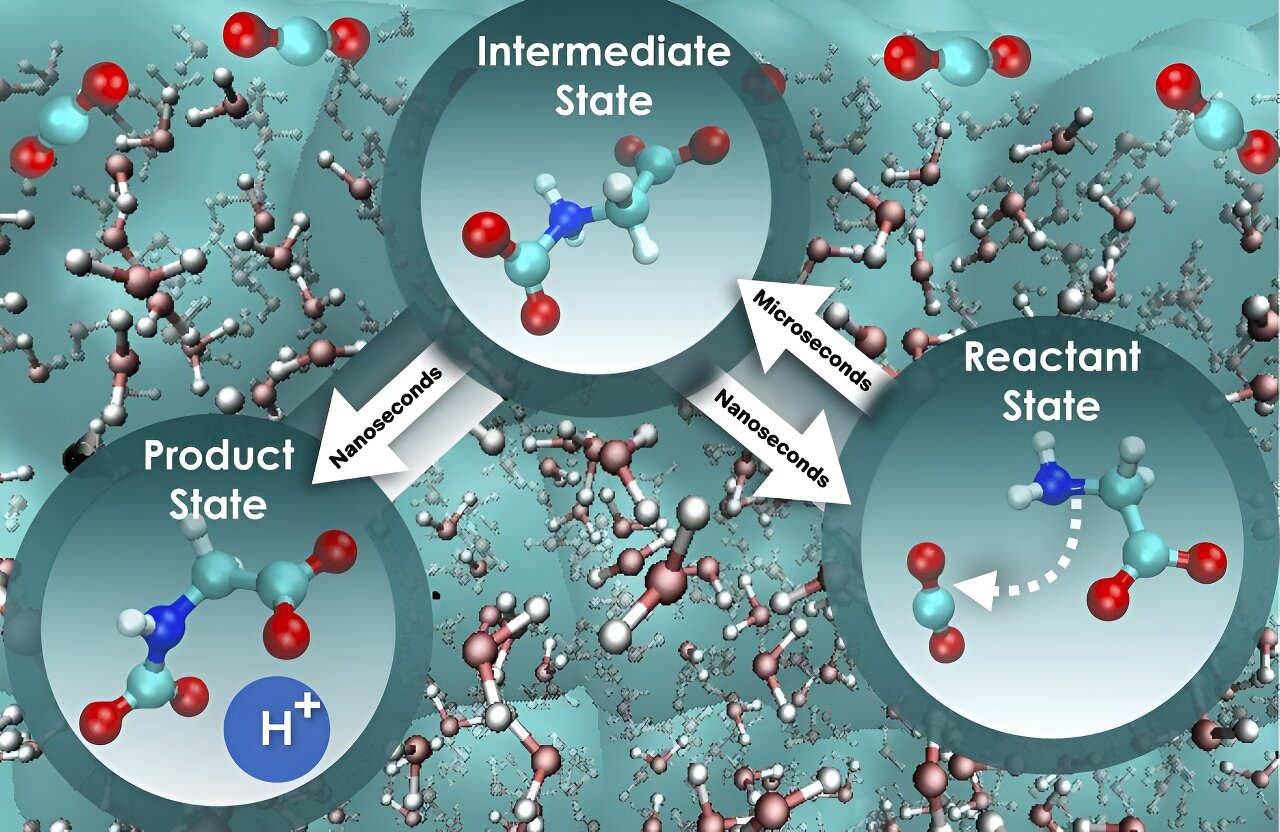Scientists at the Department of Energy’s Oak Ridge National Laboratory have made a significant stride toward understanding a viable process for direct air capture, or DAC, of carbon dioxide from the atmosphere. This DAC process is in early development with the aim of achieving negative emissions, where the amount of carbon dioxide removed from the envelope of gases surrounding Earth exceeds the amount emitted.
The research, recently published in Cell Reports Physical Science, focused on the foundational steps of carbon dioxide sequestration using aqueous glycine, an amino acid known for its absorbent qualities. By combining a series of advanced computational methods, the scientists probed less-explored dynamic phenomena in liquid solutions related to the rate at which carbon dioxide can be captured.
“Chemical reactions in water are complicated, especially when the motion of water molecules plays a big role,” said Santanu Roy, who designed the computational investigation with colleague Vyacheslav Bryantsev. “Water molecules and chemicals engage in something similar to a coupled dance that can marginally or significantly slow the reaction. Understanding these dynamic interactions, known as nonequilibrium solvent effects, is essential to getting the full picture of how reactions work and how fast they happen.”
The researchers discovered that when examining the rate at which carbon dioxide is absorbed, focusing solely on the free energy barrier—the energy threshold that must be overcome for a system to transition from one state to another—is an oversimplification that does not provide the full picture. This incomplete approach can lead to an inaccurate understanding of reaction kinetics, the factors that influence the speed at which a reaction occurs.
“We employed a more complete approach that considers the influence of water on the motion along the reaction path, and the outcome was intriguing,” Bryantsev said. “The initial step, where glycine interacts with carbon dioxide, is nearly 800 times slower compared with the next step, where a proton is released to ultimately form a mixture of product state for holding the absorbed carbon dioxide.
2023-12-03 03:41:03
Post from phys.org rnrn




















